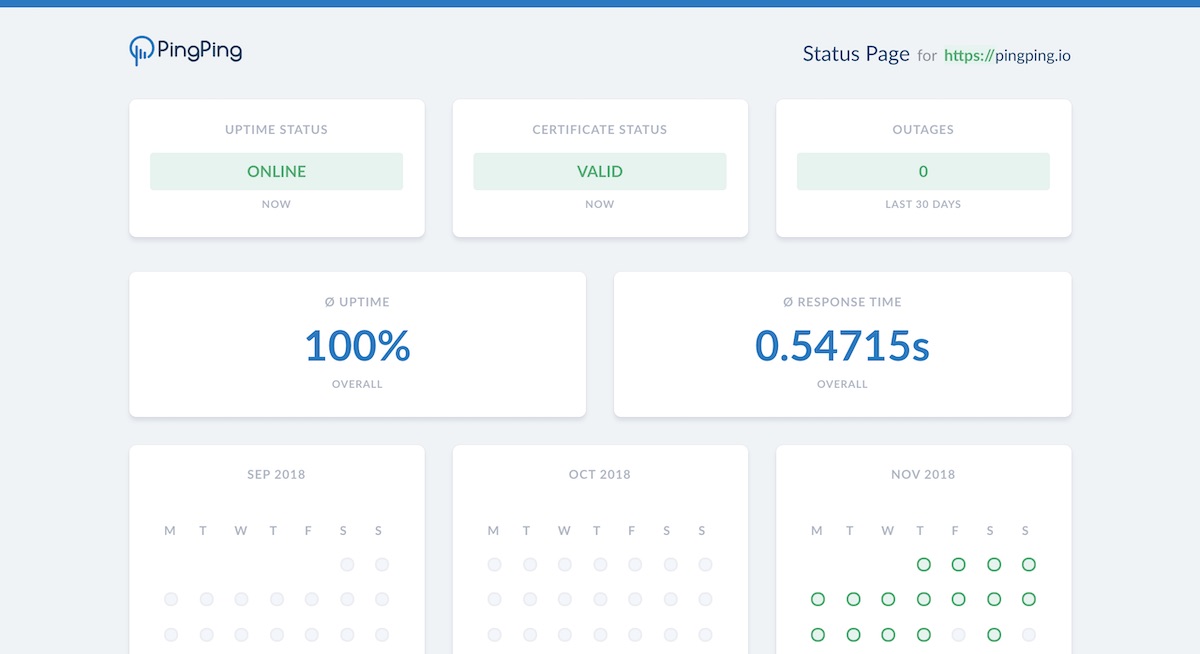Setting Up Status Pages
What is a Status Page?
A status page is a dedicated webpage that provides real-time and historical information about your service's availability and performance. It serves as a transparent communication channel between you and your users, keeping them informed about current system status, ongoing incidents, and planned maintenance.
Modern status pages go beyond simple up/down indicators, offering detailed insights into service health across different components and regions. They help build trust with users by providing proactive communication about service issues and maintenance activities.
At PingPing, we make it easy to create and maintain professional status pages that automatically update based on your monitoring results, ensuring your users always have accurate, current information about your services.

Why You Need a Status Page
Status pages provide several critical benefits for both businesses and users:
Reduced Support Load: Proactively inform users about issues before they contact support
Enhanced Trust: Demonstrate transparency and commitment to service quality
Better Communication: Provide a central source of truth for service status
SLA Reporting: Track and demonstrate service reliability
In today's digital landscape, users expect transparency about service health. A well-maintained status page shows professionalism and respect for your users' needs.
Essential Status Page Components
An effective status page should include these key elements:
System Status Overview: Clear, current status of all services
Incident History: Record of past issues and resolutions
Performance Metrics: Key performance indicators and uptime statistics
Setting Up Your PingPing Status Page
Creating a status page with PingPing is straightforward. For each website you monitor for uptime, a private status page is created automatically. You can publish the status page and configure a custom domain name for it, such as status.yourdomain.com.
You can also add a public status page to your website by adding a link to your status page in the footer and adding it to your support documentation.
Managing Incidents
Effective incident management is crucial for status page maintenance. When an incident occurs, follow these steps:
Acknowledge the issue promptly
Provide clear initial communication
Update status regularly
Document resolution steps
Post incident summaries
Scheduled Maintenance Communication
Properly communicating planned maintenance helps minimize user impact:
Before Maintenance:
Announce well in advance
Specify exact timing and duration
Detail expected impact
Provide alternative solutions if applicable
During Maintenance:
Confirm start of maintenance
Provide progress updates
Report any complications
Announce completion
Integrating Status Pages
Maximize the value of your status page through proper integration in your website by adding links to your status page in the footer and adding it to your support documentation.